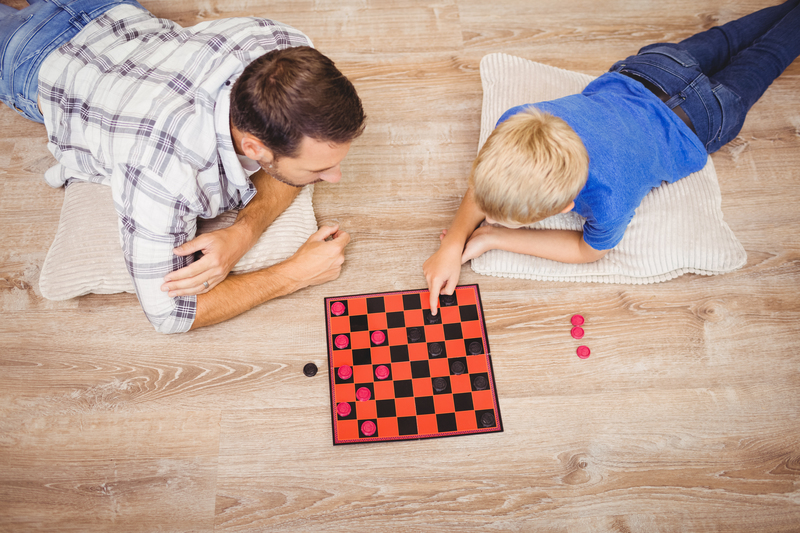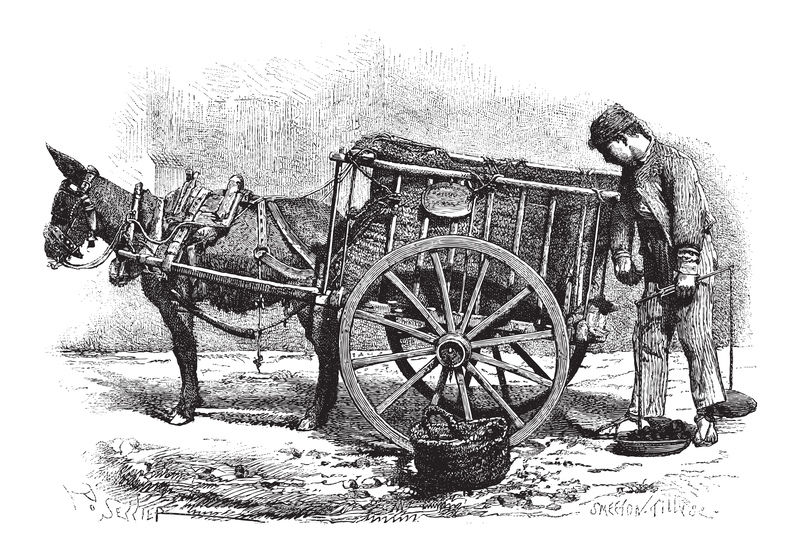Reimagine Possibilities: How Upcycling Trash Sparks Creativity and Sustainability
In a world facing mounting environmental challenges, rethinking our relationship with waste is essential. Upcycling trash stands as a powerful movement at the intersection of sustainability and innovation. Rather than sending discarded items to overflowing landfills, upcycling transforms them into useful, beautiful, or even artistic pieces. This article delves deep into how upcycling trash fuels creativity, supports sustainability, and offers a reimagined future for our planet.
What Is Upcycling Trash? A Modern Solution to Waste
Upcycling is the process of creatively reusing discarded materials -- essentially turning "trash" into "treasure." Unlike recycling, which often breaks down objects into their raw materials before remanufacturing, upcycling retains the original form and function, repurposing it with minimal processing.
- Reimagining Possibilities: Upcycling turns what was once seen as disposable into valuable resources, furniture, arts, fashions, and more.
- Eco-Friendly Design: Upcycled creations often incorporate innovative design and craftsmanship, minimizing environmental impact.
- Reducing Landfill Waste: Every upcycled item is one less object contributing to our growing global waste problem.
Upcycling trash is not just about giving items a second life. It's about questioning the very notion of waste and tapping into boundless creativity.

Why Is Upcycling Important for Creativity and Sustainability?
Across the globe, millions of tons of waste are generated yearly, with only a small fraction being recycled efficiently. By upcycling, we:
- Encourage Creative Thinking: Upcycling challenges individuals and communities to see ordinary items in new, inventive ways.
- Promote Sustainability: Upcycled projects consume fewer resources, reduce carbon footprints, and foster a less wasteful society.
- Support Local Economies: Small businesses and local artists often thrive on upcycled products, bringing value to unwanted materials.
- Cultivate Environmental Awareness: Engaging with upcycled goods raises consciousness about consumption and the environmental impact of waste.
The Difference Between Upcycling and Recycling
While both upcycling and recycling aim to reduce waste, their approaches and outcomes differ significantly:
- Recycling breaks materials down (such as melting plastic or paper pulping) and remanufactures them into new items, often resulting in lower quality.
- Upcycling transforms materials in their current state, preserving or improving their value with little energy input.
In short, upcycling is more sustainable, energy-efficient, and can yield higher-value outcomes than traditional recycling.
The Creative Spark: How Upcycling Trash Inspires Innovation
One of the most fascinating aspects of upcycling trash is the burst of creativity it inspires. Artists, designers, homeowners, and entrepreneurs are discovering endless ways to repurpose what was once destined for the dump.
Famous Examples of Upcycled Creations
- The Bottle Cap Mosaics: Artists worldwide have transformed massive collections of bottle caps into vibrant wall art or decorative pieces.
- Pallet Furniture: Discarded shipping pallets have become the foundation for rustic & stylish sofas, decks, bedframes, and shelving units.
- Old Tires as Playgrounds: Communities and schools have repurposed used tires into safe and colorful playground equipment.
- Plastic Bottle Greenhouses: Gardeners build entire greenhouse walls from liter bottles, reducing plastic waste while growing food sustainably.
These examples are just the tip of the iceberg. From handbags fashioned from vinyl banners to jewelry made from circuit boards, the possibilities for creative upcycling are virtually limitless.
How Upcycling Trash Contributes to a Greener Planet
The environmental impact of upcycling trash goes far beyond just waste reduction. Here are several significant ways upcycling supports the planet:
1. Reducing Landfill Overflow
Landfills pose grave risks to soil, water, and air quality. By repurposing trash into valuable goods, upcycling dramatically cuts down on the volume of waste piling up in dumps.
2. Saving Energy and Resources
Conventional manufacturing requires mining, processing, and transporting new materials, which eats up massive amounts of energy. Upcycling uses existing materials, drastically reducing energy consumption and associated pollution.
3. Lowering Greenhouse Gas Emissions
The decomposition of landfill waste releases methane, a potent greenhouse gas. Keeping materials out of landfills through upcycling helps slow climate change by reducing emissions.
4. Conserving Natural Resources
Transforming "waste" into useful goods helps to conserve precious raw materials such as trees, metals, and petroleum-based plastics, protecting ecosystems and biodiversity.
5. Encouraging Sustainable Consumption
Upcycling encourages consumers to buy less and reuse more, leading to less demand for resource-intensive, single-use products.
Upcycling Trash at Home: Simple Projects to Kickstart Your Creativity
Ready to unleash your imagination and embark on your own upcycling adventure? Here are engaging, eco-friendly projects for any skill level:
1. Jar and Bottle Transformations
- Convert old glass jars into stylish storage containers, vases, or lanterns with a touch of paint, twine, or decoupage.
- Craft plastic bottles into hanging planters, bird feeders, or watering cans.
2. Pallet Innovations
- Sand and paint wooden pallets to create bookshelves, tables, or even a raised garden bed for your backyard.
3. Denim Revival
- Old jeans can become durable tote bags, patchwork quilts, or unique cushion covers.
4. Tech Trash Art
- Upcycle obsolete electronics into funky lamps, wall art, or jewelry by carefully dismantling and reassembling parts.
5. Furniture Flourish
- Give worn chairs, dressers, or desks new life with paint, stencils, and fresh hardware.
*Remember: Safety is paramount. Use gloves, tools, and ventilation when handling potentially hazardous items.*
The Upcycling Trend: Fad or the Future of Sustainability?
Upcycling has steadily evolved from a niche hobby into a mainstream sustainability movement. Today, it's embraced by eco-conscious consumers, forward-thinking businesses, and leading designers worldwide.
- Fashion houses create runway pieces from textile waste and vintage garments.
- Home decor brands offer upcycled lighting, rugs, and furniture.
- Automotive companies use reclaimed materials for car interiors.
Many believe that upcycling trash represents not only a creative trend, but a vital shift towards a circular economy--one where resources are continually reused, and waste is minimized.
How Upcycling Trash Empowers Communities
The benefits of upcycling extend beyond individual creativity and the environment--it empowers entire communities:
- Local Employment: Upcycling enterprises create jobs in design, production, collection, and retail sectors.
- Educational Opportunities: Community workshops teach upcycling skills, fostering environmental stewardship and hands-on learning.
- Social Inclusion: Marginalized individuals and groups are often involved in collecting or repurposing items, building confidence and community ties.
- Boosting Local Economies: Upcycled products often fetch higher prices due to their uniqueness and sustainable appeal.
Eco-Entrepreneurship: How Small Businesses Are Thriving with Upcycling Trash
A new wave of eco-entrepreneurs is harnessing the power of upcycling trash to offer one-of-a-kind, sustainable products:
- Upcycled furniture studios transform cast-off timber and fixtures into luxury home goods.
- Accessory brands use seatbelts, fire hoses, or rubber tires to craft handbags, wallets, and belts.
- Artisans and crafters breathe new life into glass, ceramics, metals, and textiles, selling their creations online or at markets.
Supporting these enterprises means supporting the planet, skilled craftsmanship, and ethical economics.

Tips for Starting Your Upcycling Journey
1. Change Your Perspective
Begin viewing discarded objects not as waste, but as untapped resources for creativity. What could you build or beautify with what's at hand?
2. Start Small, Dream Big
Tackle manageable projects--repurposing containers, upcycling clothing, or creating simple wall art. Gradually take on more ambitious creations as your skills grow.
3. Learn and Share Skills
There's a wealth of knowledge available online and through local workshops. Learn basic woodworking, sewing, or electronics skills to open up new upcycling possibilities -- and share what you know!
4. Connect with the Community
Join upcycling groups, swap meets, or local green clubs to stay inspired and exchange materials, ideas, and finished projects.
5. Support Upcycled Products
When shopping, choose goods made from upcycled materials to support sustainable businesses and encourage more responsible manufacturing.
Conclusion: Reimagining a Greener Tomorrow
Upcycling trash is more than a trend -- it is a mindset, a movement, and a creative revolution. By reimagining what's possible, we not only spark creativity and innovation but also drive sustainability and environmental regeneration. Whether on a global, local, or personal scale, upcycling offers a hopeful path forward, turning yesterday's trash into tomorrow's treasures.
Embrace the challenge. Reimagine possibilities in your everyday life and become part of a worldwide community building a better, cleaner, and more creative future through the transformative power of upcycling trash.
For more upcycling ideas and eco-friendly inspiration, explore resources, join workshops, and connect with like-minded enthusiasts in your community or online.
